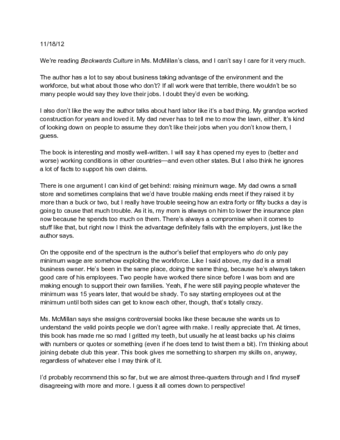
The auditor should decide the materiality threshold by considering the size of the business and the generally accepted auditing standards . Internal control procedures are in place to protect the assets of a business. https://online-accounting.net/ Of the seven internal control procedures, list five of these controls and describe how each procedure is implemented. Internal Control Procedures are in place to protect the assets of every business.
- It can be for financial information, operations, data, systems, or processes.
- Identify what the differences and similarities are, in audits of financial statements, compliance audits, and operational audits.
- Investigations include alleged instances of fraud, waste and abuse, and improper activities.
Passing or failing an audit often depends on your organization and its employees’ mindset. Don’t be afraid to look critically at your own processes and methods, but be equally objective and critical of the auditor’s findings. You’d be amazed at how valuable and productive these discussions can be.
What is an external audit?
An internal audit is a regular, systematic inspection performed by someone from within your organization. Determine if departments adhere to federal, state, and university rules, regulations, policies, and procedures.
- Otherwise, the staff will recommend a change and review it later to ensure it is properly installed and followed.
- Audits performed by outside parties can be extremely helpful in removing any bias in reviewing the state of a company’s financials.
- An organization may conform to its procedures for taking orders, but if every order is subsequently changed two or three times, management may have cause for concern and want to rectify the inefficiency.
- This will include the discrepancies found in the financial reporting and any non-compliance with rules and regulations relevant to your business.
- Internal audits are performed by the employees of a company or organization.
Performed by external organizations and third parties, external audits provide an unbiased opinion that internal auditors might not be able to give. External financial audits are utilized to determine any material misstatements or errors in a company’s financial statements. The results of the internal audit are used to make managerial changes and improvements to internal controls. The purpose of an internal audit is to ensure compliance with laws and regulations and to help maintain accurate and timely financial reporting and data collection.
Third party audit
In the absence of public audits by an independent auditor or accounting firm, a company’s ability to price securities is called into question. Financial audits are important for all companies and even small businesses. They can help a business operate better, benefiting the business owners, board members, and shareholders. Depending on the category of a company, an audit of the financial statements can be a requirement of the concerned governing Types of audits body. Discuss the similarities and differences between financial statement audits, operational audits, and compliance audits. At the end of the external audit, the auditor will prepare and deliver an auditor’s report to your business, including the details and findings from the audit. This will include the discrepancies found in the financial reporting and any non-compliance with rules and regulations relevant to your business.
- An unqualified, or clean, auditor’s opinion provides financial statement users with confidence that the financials are both accurate and complete.
- Self Assessment – Self assessments are performed by the client based upon a framework to be provided by Internal Auditing.
- This report details the issues discussed and focuses on important areas for attention or improvement.
- Process Audits – Internal Auditing undertakes comprehensive analyses and appraisals of all phases of business activities and provides management appropriate recommendations concerning the activities reviewed.
